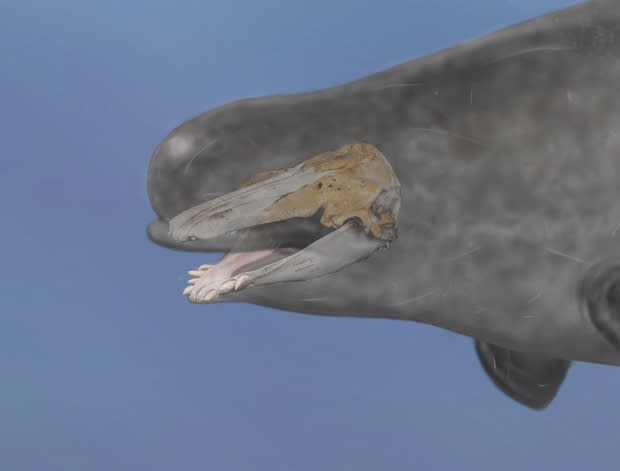Hello Narluga! Ontario researcher helps confirm rare hybrid whale
An Ontario anthropology professor has helped a Danish team confirm the existence of a beluga-narwahl hybrid whale — now dubbed the "narluga."
It started with a strange skull, collected from a hunter in Greenland three decades ago and passed on to academics in Denmark.
They shared what they had with Trent University's Paul Szpak, an expert in the chemical analysis of bone.
"It's a really interesting skull," Szpak told Ontario Morning host Wei Chen, "belugas and narwahls have very different skulls from one another."
He was especially taken by the unusual teeth, which looked like miniature tusks on the top jaw and like corkscrews on the bottom.

Together, Szpak and his Danish counterparts got to work, with the Danes focusing on the DNA component and Szpak comparing the chemical makeup of the skull and bone from the two possible parent species.
Last week, they published an academic paper explaining what they found.
"It was a first generation hybrid, meaning the parents were a beluga and a narwahl. Particularly a narwahl mom and a beluga dad," said Szpak.
The animal, scientists believe, was very large — bigger than either the narwahl or the beluga — something Szpak says is common for hybrids.
By working on the teeth, Szpak was also able to determine its diet, which he said would have been quite different from its parents.

"The hybrid was probably eating most of its food from the ocean bottom. That might have been because it could dive more effectively because it was quite big and quite robust," he said.
Two similar creatures spotted
So, could there be more?
Scientists have in their possession a single skull, but the hunter told others he saw two similar creatures off the coast of Greenland all those decades ago.
"That could have been one Beluga male who was quite the romancer of narwahl females ... those are the only instances we know," said Szpak.
It's especially hard to tell since belugas and narwahls live mostly far away from human observation, he said.
"There might be more, but it's going to be hard to know if there are more," he said.


